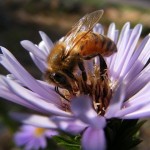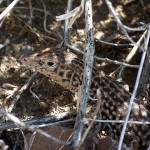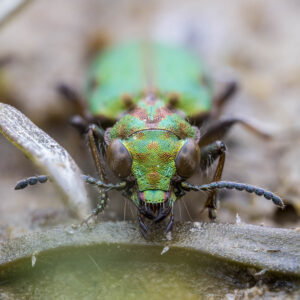This Sunday is a day reserved for celebrating all the wonderful fathers in our lives. Why not take a moment to recognize some of the prominent pops in the Bay Area’s animal kingdom?

Romantic courtship and parental investment? What a catch! Come spring, the male three-spined stickleback fish busies himself preparing a nest out of twigs, plant debris and mucus. He then engages in a zigzag courtship dance in hopes of attracting a potential mate back to his aquatic abode. Once the eggs have been laid and the female stickleback’s role is complete, she is driven from the nest and the male takes his place guarding the eggs until they hatch. During this time, the male takes full responsibility for the eggs, guarding them from predators and even fanning them with his tail to guarantee adequate oxygen.
For the first month after his pups are born, male red foxes provide their mate with food every four to six hours while she is confined to the den with the pups. However, it turns out there’s no such thing as a free meal in the animal kingdom either. Red fox pups begin learning their first lesson in independence at about three months old, when a fox father stops bringing food back to the den. Not to worry, dad doesn’t let his pups go hungry; he hides food close to the den and disguises it with leaves and twigs, teaching his young to forage and sniff out the food on their own.
 The Sacrificial Dad: Honey Bee
The Sacrificial Dad: Honey Bee
You can’t blame the male honeybee if he’s only got one thing on his mind; mating with the queen is the sole reason for his existence. In fact, the male honeybee, or drone, takes his life’s goal so seriously that he’s willing to commit sexual suicide to achieve it. The honeybee’s queen mates only once in her lifetime, using the sperm collected during that one trip throughout the rest of her life. As if dying for the sake of repopulating your colony weren’t dramatic enough, the honeybee’s reproductive ritual actually occurs midair. Though only lasting a few seconds, the drone is fatally injured in the process and falls to the ground to die. Funny that this account never made it into the talk about the birds and the bees.
 The Nonexistent Dad: California Whiptail Lizard
The Nonexistent Dad: California Whiptail Lizard
Men: can’t live with them, can’t live without them. Except the California whiptail lizard appears to have done just that. This all-lady lizard species reproduces asexually through a process called “parthenogenesis,” during which a female self-fertilizes her own eggs. The next generation of this celibate species will have genetic material identical to the mother’s, essentially producing clones. Might as well save the birth announcements, though; it’s always a girl.
 Deadbeat Dad: North American River Otter
Deadbeat Dad: North American River Otter
You won’t find this deadbeat dad helping his mate find a suitable den to give birth, nor do they take any part in the process of raising the pups produced there. Female river otters feed, protect and teach their young to swim, all without the aid of the pups’ father. This isn’t for a lack of social structure within the species; in fact, the North American river otter is considered more social than many of his cousins. Male river otters simply seem to prefer the company of other bachelors, hunting and traveling in groups sometimes as large as 17 individuals.






